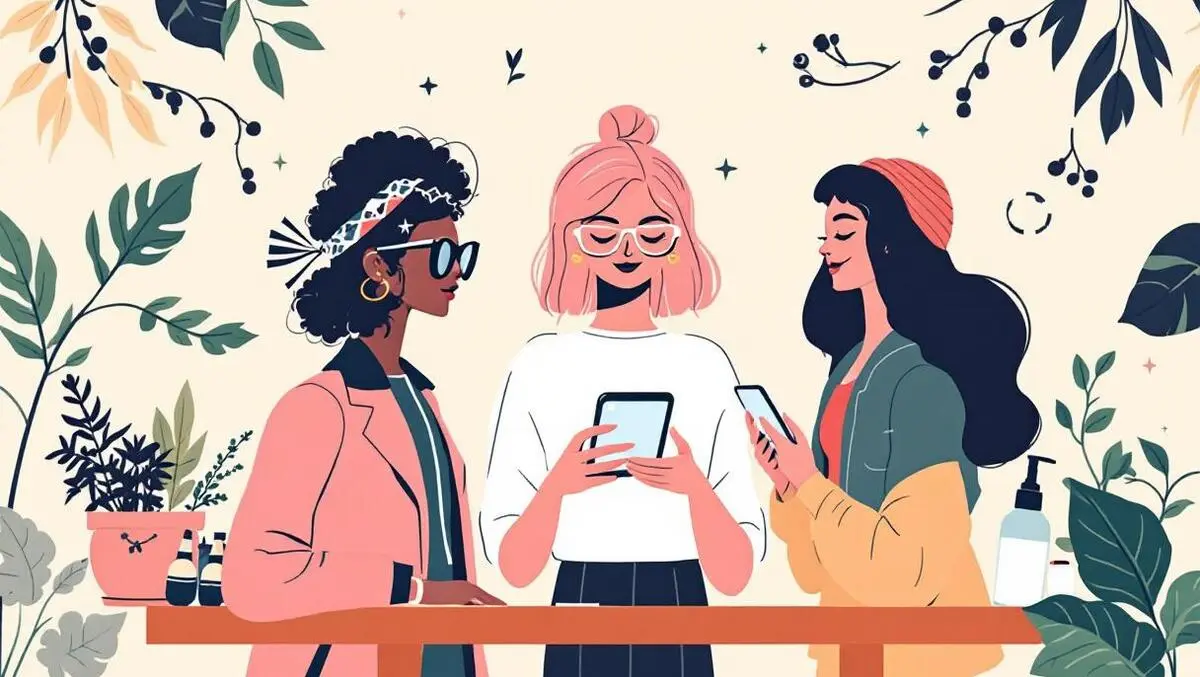
Five key marketing trends to shape fashion & beauty in 2025
Taboola has released research identifying five key marketing trends that are expected to shape the fashion and beauty industries in 2025, driven by technology, shifting consumer values, and evolving digital platforms.
Visual storytelling
According to Taboola's findings, visual storytelling and authentic content will play a central role for brands targeting the increasing population of Gen Z and Millennial consumers. The focus is moving away from highly polished advertising towards more relatable, documentary-style campaigns and high-quality user-generated content (UGC).
Micro and nano influencers are becoming increasingly important for reaching niche audiences, as brands prioritise authenticity over broad reach. Brand collaborations with smaller influencers, combined with the proliferation of UGC, are helping to build community trust and social proof.
Short-form videos on platforms such as TikTok and Instagram Reels offer opportunities for brands to provide behind-the-scenes insights and showcase authenticity, which can boost customer engagement and conversion. Native and display advertising continue to be instrumental, with case studies such as Bedrop's 77% increase in revenue following native advertising serving as evidence.
Taboola's research highlights that 85% of Gen Z consumers consider authenticity important when selecting brands to support, while 71% have made beauty purchases as a result of TikTok videos.
Social commerce
Social commerce is described as the new storefront, with direct selling via platforms like TikTok Shop and Instagram Checkout rivaling traditional eCommerce sites. Live shopping events offer interactive experiences where consumers can enquire about products and purchase in real time.
Success in this landscape depends on effective integration, including features like shoppable product tags and live cart options. Blended strategies using both organic and paid content are highlighted as effective for managing customer acquisition costs while increasing return on advertising spend. Display and native placements are being used to support these social-first approaches, promoting live events and product launches.
The sector's momentum is evidenced by projections that the global social commerce market will exceed USD $2 trillion by the end of 2025, and 76% of consumers are more likely to purchase from brands they engage with on social media. Nearly 44% of US TikTok users made purchases through the platform last year.
Personalisation and inclusivity
Taboola's analysis indicates a heightened demand for personalisation, with consumers expecting more than just personalised email greetings. Advances in data sharing and analytics allow brands to deliver tailored recommendations and predictive design in their campaigns. Tools such as AI-powered quizzes and analysis of digital behaviour are increasingly being used to match demographic data with purchase history.
Inclusivity is cited as a baseline expectation, not a marketing trend. Brands demonstrating diversity in ethnicity, body types, and gender identities record higher engagement and loyalty. An inclusive approach to advertising and creativity is becoming essential for brand success.
According to the findings, brands prioritising diversity outperform their peers by 36%, while small to medium businesses using AI personalisation saw a 15% increase in sales year-on-year. Three-quarters of shoppers said they are more likely to choose inclusive brands.
Augmented reality and virtual try-ons
Taboola reports that augmented reality (AR) and virtual reality (VR) technologies are impacting consumer experiences significantly, especially in beauty and fashion. Virtual try-ons are allowing consumers to test products such as lipsticks or outfits in real time, with major platforms facilitating integration of these technologies directly onto product pages.
These interactive experiences not only entertain customers but also reduce return rates, in some cases by 5% or more. AR ad features, including shoppable lenses, contribute to more engaging advertisements.
An additional benefit is sustainability. Virtual product displays and try-ons reduce physical waste associated with samples and trial products. Statistics show that 61% of shoppers favour retailers offering AR experiences, and the value of AR services in retail is expected to exceed USD $9 billion by 2032.
Sustainability and ethics
Growing consumer concern over ethical practices and environmental impact continues to drive the trend towards sustainability. Movements towards slow fashion, clean beauty, and responsible sourcing have increased, with resale and refill options gaining prominence.
Transparency is crucial, and brands are communicating their sustainability initiatives through clear online content, certifications such as Fair Trade and B Corp, and visual branding - for example, labelling for Leaping Bunny certification or including QR codes linking to sustainability information.
Sixty-two percent of Gen Z shoppers prefer to buy from sustainable brands; 73% are willing to pay more for sustainable products, and 60% of beauty shoppers are influenced by eco-friendly packaging.
Strategic focus
The goal for fashion and beauty brands in 2025 shouldn't be to chase every new trend, but instead take intentional steps to promote their products to an ever-changing customer base. Authenticity, inclusivity, interactivity, and sustainability should be the foundation to any marketing campaign, helping you drive greater ROI and build long-term trust with your community.


